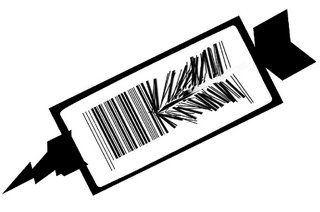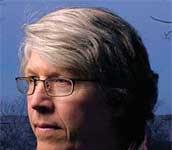Editor’s note: here is a very interesting article by Steve Weber, which is reprinted, with his permission, from his website, Weber Books. One of the nice things about this gig is that I learn so much new and interesting stuff. Thanks, Steve! PB
 Quick, how many copies of your books sold this month?
Quick, how many copies of your books sold this month?
Most authors know their Amazon Sales Ranks, but few can tell you how many books have sold, and where.
Amazon’s ranks are the poor man’s Nielsen BookScan, they reveal the rate at which a title sells relative to competitors. But if you want real, hard numbers — how many copies sold and where people bought them, you need BookScan.
Remember those checkout scanners at your local Barnes & Noble? BookScan is watching. Unlike some other bestseller lists, BookScan actually counts the cash readers pay for books.
BookScan is like an author’s credit report. Just as you can’t get a loan without a decent credit report, you can’t get another book deal if your BookScan numbers stink. In this blog post, editor Alan Rinzler explains why authors need BookScan, and how lousy numbers can ruin your career. (Problem is, most authors need a loan to pay BookScan’s subscription fee, $5000 a year for full access.)
BookScan includes sales from Amazon and the brick-and-mortar chains, covering about 75 percent of retail sales. But BookScan doesn’t reach one growing channel — big-box retailers like Wal-Mart, Sam’s Club, and BJ’s Wholesale Club. They don’t report to BookScan.
Now, perhaps there’s an even bigger leak in the hose: eBooks. Until recently, they’ve been an afterthought, and BookScan hasn’t even bothered. The conventional wisdom was eBooks were stuck at 1 percent or 2 percent of the business.
But this month, BookScan was whacked upside the head by two Kindles and an iPhone. Jaws dropped when Amazon honcho Jeff Bezos claimed that 35 percent of Amazon’s unit sales are now Kindle editions (for titles available in paper and Kindle). Frankly, I didn’t believe the 35-percent figure, but Bezos had a 35-foot chart to prove it.
But BookScan isn’t reporting this explosion in eBook sales. Nielsen’s Dennis Halby says they’d like to get eBook numbers, but don’t have an estimate on when that might happen. And considering the terrarium-like Kindle environment Amazon is building, I wouldn’t be surprised if Amazon keeps a lid on things. In fact, I wouldn’t be surprised if Amazon launched a BookScan rival.
How much market share does Amazon have in eBooks? Nobody knows. I’d guess it’s 75 percent and rising fast.
Not only does Amazon have the biggest eBook channel, they’ve got many titles exclusively. Amateur and professional writers alike are uploading gigabytes of words to Amazon’s Kindle Store every day. And why not? There’s no barrier to entry, no registration fee. Any high-school kid in America can upload their latest book report to Amazon and charge $20 for it, and lots of them are doing it.
One link is missing, though: None of these gazillion eBooks have a industry-standard identifier, as BookScan requires for tracking. Not a single ISBN on Amazon eBooks — not the ones from Random House, and not the ones from the random kid down the block.
Believe it or not, even when a savvy self-publishing author buys an ISBN for his or her book from Bowker, and submits it with the rest of the metadata through Amazon’s Digital Text Platform, Amazon ignores the ISBN. In the Kindle Store, the only identifier for eBooks is the proprietary Amazon Standard Identification Number.
Granted, 99 percent of these do-it-yourself eBooks aren’t selling in meaningful numbers. But some do, and only Amazon can see the diamonds in the rough. Just this week, the company announced plans to cash in on these indie books. AmazonEncore will identify the ones with potential, clean them up, relaunch them, and push them to brick-and-mortar bookstores.
And that’s how, over the next few years, Amazon could become a major power in book publishing. Meantime, it could make the New York Times, USA Today, CNN, and Wall Street Journal bestseller lists obsolete.
I don’t know how this will shake out. But if I were working at BookScan or at a company who provides services for self-publishing authors, I’d be dusting off my resume. Or maybe uploading it to the Kindle.






























Despite the fact that Amazon takes 65% of Kindle store proceeds, they do at least provide one nice benefit to writers who sell their stuff there. Not only can you watch your daily numbers in close to real time, but you can also download spreadsheets of each month’s sales for your records. That’s both units per title and dollars.
Of course these numbers don’t help market researchers like Nielsen, but they do provide incontrovertible proof of sales to prospective publishers.
On another topic: I don’t know if Amazon really has 75% of the ebook market, but there is a way they might be able to make that claim. I sell many units of my ebooks and articles through the Kindle Store. Of course at the prices I charge–usually 99 cents–I can sell boatloads and not make much money. But because Amazon is counting each of those sales, they might legitimately be able to claim a huge market share. Depends on the definition of an ebook sale. Dunno.
Well it is pretty easy to say unit sales are 35% Kindle editions if you don’t have a third party confirming the sales channel which is the benefit of having Bookscan or BookNet in Canada. There isn’t a conflict of interest in having sales reported that way, and exactly the point about isbn’s – what do you track? Amazon cannot be trusted on reporting sales numbers.